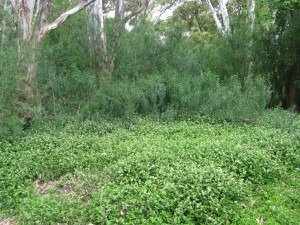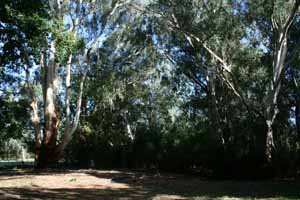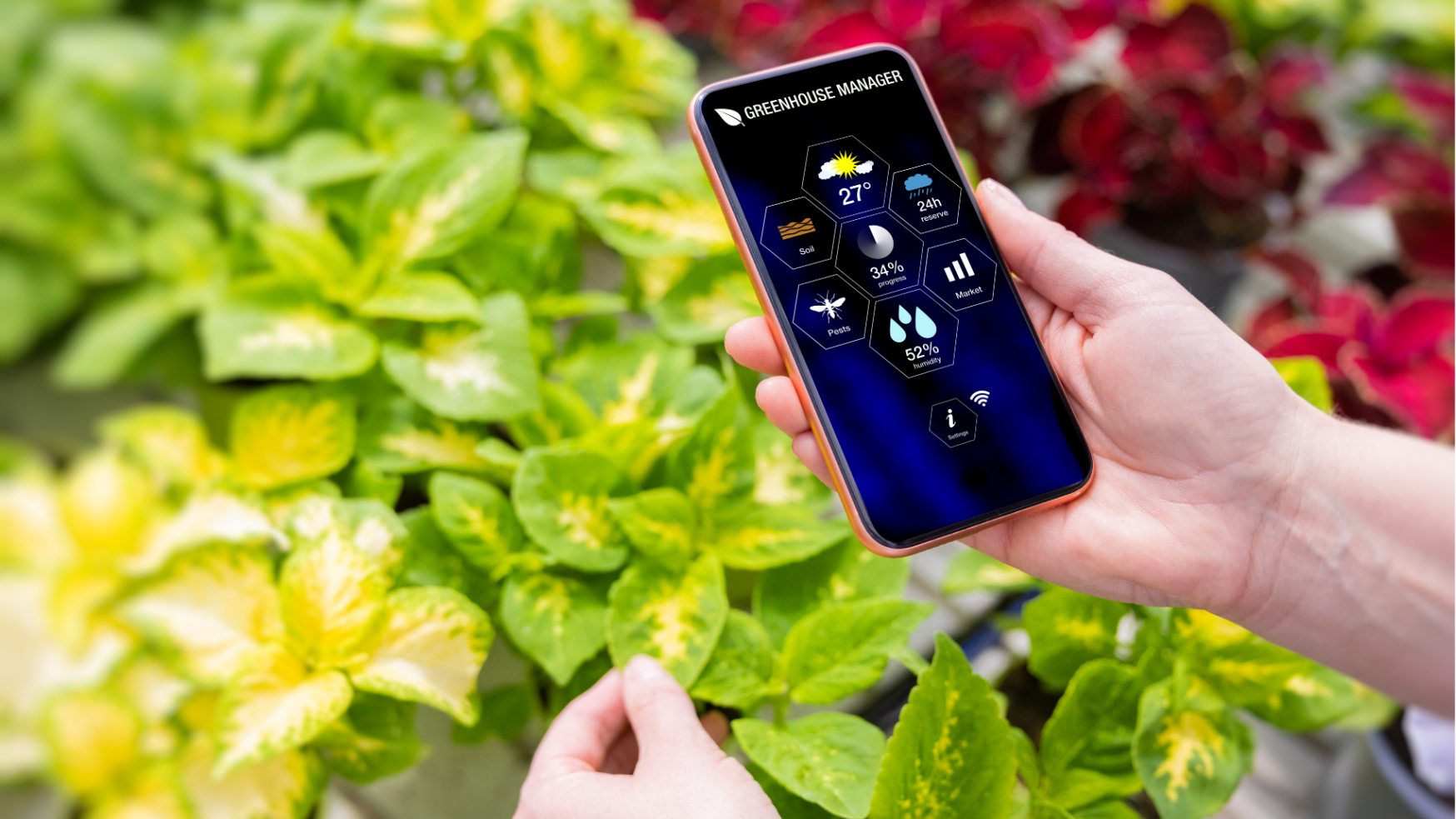“There is a growing and strong, but quite unscientific ‘feeling’ that the bush must be saved and I believe this feeling should be encouraged to the utmost.” John Reed, 1971.
The protection of what is left of Australia’s unspoilt native bushland is imperative for the survival of precious and endangered indigenous flora and fauna. Climate change, extreme weather events, bio-invasion by introduced species and inappropriate development are all impacting already stressed and fragile environments. When I was presented with the opportunity to restore a section of the gardens at the Heide Museum of Modern Art in the lower Yarra Valley, I knew I was fulfilling John Reed’s ultimate vision “to preserve and perhaps rehabilitate as much as possible of the Valley.”
Heide is known widely as one of Australia’s most important cultural institutions It was founded in 1934 by John and Sunday Reed who made it their home. They gathered around them artists who are among Australia’s most well-known – Albert Tucker, Joy Hester, John Perceval, Charles Blackman and Sidney Nolan. The surrounding gardens are as integral to the Museum as the nationally significant art collection.
Heide’s sixteen acre site offers an ever-varying environment of native and exotic trees, shrubs, flowering plants and paddocks that extend over the river flats to the banks of the Yarra River. From the famous Kitchen Gardens, formal perennial walks and parterre gardens to woodlands and parkland dotted with contemporary sculpture, Heide’s gardens offer visitors a unique experience of art, architecture and landscape.
Prior to European settlement, Heide’s Sculpture Park was a Floodplain Riparian Woodland. This Ecological Vegetation Class (EVC) occurs downstream from Westerfolds Park and has the Bioregion Status of ‘endangered’. It can be described as open eucalypt woodland, over a medium to tall shrub layer, with a ground layer consisting of grasses, herbs and sedges on the banks and floodplains of rivers and is a very distinctive assemblage of plants.
When John and Sunday Reed purchased a neglected dairy farm in 1934, and named it ‘Heide’ after the nearby town of Heidelberg, a century of clearing for agriculture and grazing had left the property virtually treeless. In the November of that same year, the Yarra River’s last major flood occurred. It was from the seed deposited in that flood and that John Reed let grow, that this pocket of endemic woodland grew. In a 1967 letter to the National Herbarium, he wrote “Since then there has been a certain amount of natural regeneration, particularly close to the river (Red and Manna gums, Black wattles, a single Acacia verticillata, Kunzia peduncularis, Plagianthus pulcelliss, Hymenanthera dentata, Goodenia ovata and one or two others. Blackwoods have also increased and a large papyrus rush has established itself at the foot of the hill where water sometimes lies for several months. There is also a single Callistemon with a reddish flower… Now, with further experience, we would like to establish, as far as possible, the flora which was indigenous to this particular area, …”
 In 2011, with this in mind, as head gardener, I proposed the creation of an Indigenous Remnant Conservation Zone (IRCZ) of just under 2000 square metres, in the south-west corner of the property. Unfortunately, it was waist deep in Tradescantia, blackberry and the other usual suspects as shown in the picture to the right. After a solid year of hand removal, with the offenders being sustainably hot-composted, the task of reveging with the range of plants from the Floodplain Riparian Woodland (EVC) and of the right provenance, to complement the established top storey by restoring balanced biodiversity and natural habitat, began.
In 2011, with this in mind, as head gardener, I proposed the creation of an Indigenous Remnant Conservation Zone (IRCZ) of just under 2000 square metres, in the south-west corner of the property. Unfortunately, it was waist deep in Tradescantia, blackberry and the other usual suspects as shown in the picture to the right. After a solid year of hand removal, with the offenders being sustainably hot-composted, the task of reveging with the range of plants from the Floodplain Riparian Woodland (EVC) and of the right provenance, to complement the established top storey by restoring balanced biodiversity and natural habitat, began.
For the upper storey, Blackwood (Acacia melanoxylon) and Late Black Wattle (Acacia mearnsii) were planted. This was all that was needed to fill in a few gaps in the already established canopy cover of mainly River Red (Eucalyptus camaldulensis), Swamp (Eucalyptus ovata) and Manna Gums (Eucalyptus viminalis). This canopy is home to mammals and large birds.
A variety of shrubs for middle-storey were planted; Sweet Bursaria (Bursaria spinosa), River Bottlebrush (Callistemon sieberi), Prickly Currant Bush (Coprosma quadrifida), Burgan (Kunzea ericoides), Prickly Tea-tree (Leptospermum continentale), Woolly Tea-tree (Leptospermum lanigerum), Tree Everlasting (Ozothamnus ferrugineus), Fragrant Saltbush (Rhagodia parabolica), Large Kangaroo Apple (Solanum laciniatum), Golden Spray (Viminaria juncea). Some thinning of the over-represented Tree Violet (Melicytus dentatus), was required to redress the balance of biodiversity. The middle-storey provides cover for small birds.
Sedges and Grasses for under-storey were Tall Sedge (Carex appressa), Hollow Rush (Juncus amabilis), Spiny-headed Mat-rush (Lomandra longifolia), Wallaby Grass (Austrodanthonia sp.), Sword Tussock-grass (Poa ensiformis), Common Tussock-grass (Poa labillarderi). This provides important shelter and forage for insects, amphibians, reptiles and mammals.
Herbs for under-storey were planted to help to control erosion during inundation and periodic flooding. These were Fishweed (Einadia trigonos) and Bidgee-widgee (Acaena novae-zelandiae).
 The restored area, shown at right, is still a work in progress. After the creation of a Wilderness Experience Track, the IRCZ is now open to the public – visitors to Heide can now immerse themselves in the sights, smells and sounds of sustainable, pre-European Australian bushland.
The restored area, shown at right, is still a work in progress. After the creation of a Wilderness Experience Track, the IRCZ is now open to the public – visitors to Heide can now immerse themselves in the sights, smells and sounds of sustainable, pre-European Australian bushland.
References
L. Harding, K. Morgan. 2012. Sunday’s Garden: Growing Heide, Miegunyah Press, Melbourne.
Department of Sustainability and Environment. 2004. EVC/Bioregion Benchmark for Vegetation Quality Assessment, Victorian Government Department of Sustainability and Environment, East Melbourne.
Dugald G. Noyes is working gardener of twenty-five years and Burnley College graduate. He has worked at a private school before becoming the proprietor of his own gardening business. He was then a gardener for the National Trust of Australia (Victoria) where he presented a ‘My Garden’ segment on ‘Gardening Australia’. His current tenure is as the Head Gardener at Heide Museum of Modern Art, where apart from doing major garden restorations and contributing to publications such as ‘Sunday’s Garden: Growing Heide’, he also does a weekly Tuesday Gardening Tip. These can be found at https://www.facebook.com/HeideMuseumofModernArt
Related Articles:
Mastering Essential Winter Gardening Skills
As the cold of winter sweep across the landscape, many gardeners in the South of Australia retreat indoors, awaiting the warmth of spring to resume…
Citizen Science: A Pathway to Gardening Success and Biodiversity Conservation
In recent years, the realm of science has experienced a remarkable transformation, one that invites people from all walks of life to participate…


